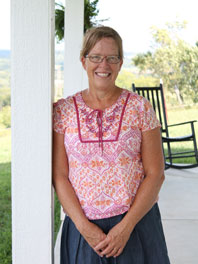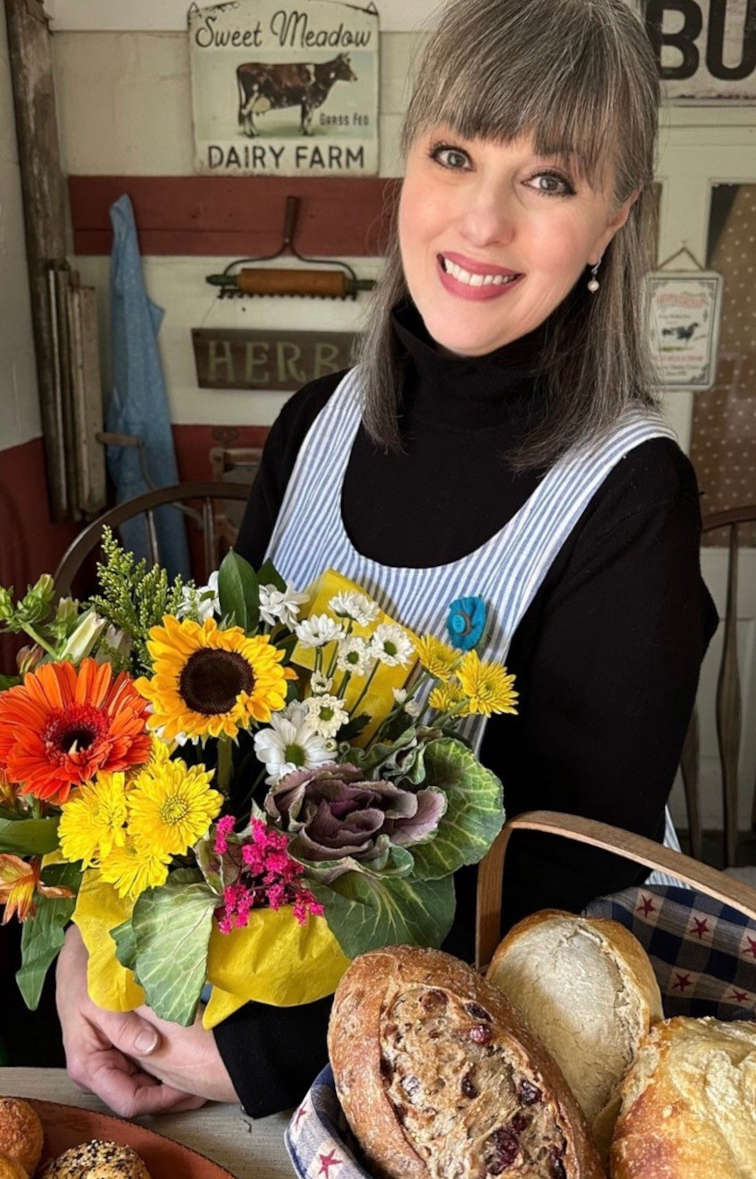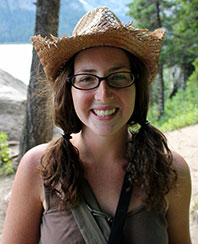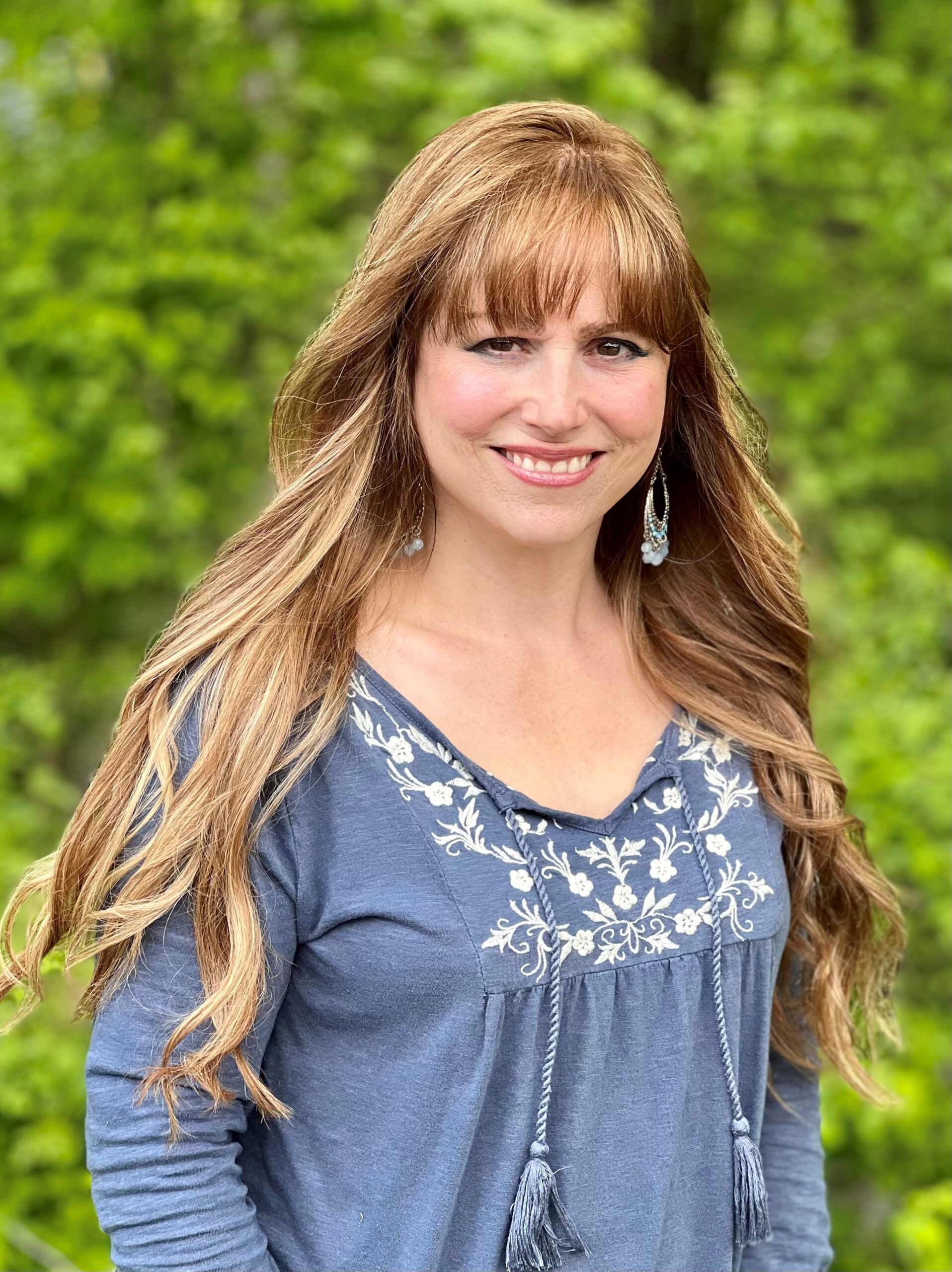I’ve always been curious about beekeeping. It’s a hobby that goes hand-in-hand with living a simpler, organic, environmentally-aware lifestyle. Not knowing where to start, I was thrilled when my family was invited to learn the art of beekeeping from another local family during their fall honey harvest!
John Boccuzzi, Jr. and family have kept bees for about three years. John originally started with a three pound box of bees, and now has about 25,000 bees in two hives. John recommends Italian bees as they are much more docile than the Russian bee variety.
John collects honey twice a year, in the late spring and early fall. The honey in June is a lighter-colored honey than the darker honey collected in the fall. Starting beehives is similar to purchasing seeds. Here in New England, bees are purchased from mail order starting in February, and new hives are set up in the spring. Other areas with warmer temps may have a different “schedule” for their zone. “Winter” bees, those in the hive that will live through the winter, will not leave the hive if the temperature is too cold, below 40 degrees. They will only leave the hive to quickly “use the restroom” and return.
The door to the hive, or “entrance reducer” is made smaller or larger to help control temperature and hive traffic.
.jpg)
Feeder boxes are filled with a mixture of one part sugar to two parts water to aid the hive at various times, like the end of winter or if pollen is low. With two large hives, the Boccuzzi’s bees can consume 5 lbs. of sugar in one week.
A bee hive consists of a queen, who lays around 1500 eggs a day and lives around one to two years, female worker bees, and male drones. Worker bees live about six weeks and produce about one teaspoon of honey in their lifespan.
Can you spot the queen bee? Hint: She’s near the middle and is larger than her workers.
The hives are wooden boxes, divided into sections. The bottom box, where the queen lays her eggs, is called a “Brood Box”, or “Deep Super”. The upper boxes, “Honey Supers”, are where honey is collected. Inside are frames holding the honeycomb and honey. A “Queen Excluder”, a mesh-like screen, can be used in between the Brood box and Honey Super to keep the queen from laying eggs where the honey is. To begin a hive, there’s two ways to start. One can order a “box of bees” with a queen in a little mesh covered box. The queen is fed through the mesh. The second way is to order a “Nuc”, where a queen and bees are on frames with honeycomb established, the bees can come and go to forage, and the queen’s already working with her hive and laying eggs. A package of bees is roughly 10,000 worker bees and one queen. John likes to order supplies from www.bee-commerce.com.
In addition to creating honey and beeswax, bees produce a reddish-brown substance called “propolis”. Made from a mixture of wax, tree buds, sap and other botanical substances, propolis is a sticky “glue” bees use to seal unwanted spaces in the hive. It’s been used for centuries by humans because of its germicidal properties, and is thought to be useful against viruses and other inflammations.
The red substance, propolis, is made by bees as a “sealant”.
The first thing to do before collecting honey is move the bees down to the bottom hive section away from the honey. John sprays the top inside lid of the hive with an all-natural spray that smells like almond extract. It won’t hurt the bees, but they don’t care for the scent. A smoker calms nervous bees.
John Boccuzzi, III and cousin Rose Cairo help out by spraying “Fisher’s Bee Quick” to the top lid.
The frames are then removed, and can be heavy! The Boccuzzi’s keep their processing tools in their garage.
John uses a soft brush to gently remove the last of the bees from the frame.
This is what the frame looks like with the honeycomb, honey, and wax.
Audrey helps her friends by carrying a frame to the garage for processing.
An electric “hot knife” slices the beeswax from the frames, exposing the honey beneath. The wax can be used to make items like beeswax candles.
Look at all that delicious honey!
After the wax is removed, the frames are placed in the extractor, a centrifuge-type device that spins, removing honey from the frame.
The kids are excited to get the extractor going!
The frames must be placed with even weight in the extractor to insure that it spins evenly (think of a washer getting off-balance). Spinning the handle was a small workout, and the kids couldn’t wait for their turn to spin it!
The extractor must be loaded evenly and spun quickly to extract the honey.
Sabrina Boccuzzi spins the handle of the extractor while Rose eagerly awaits her turn.
Once the honey is removed, a spout at the side of the extractor is opened, and honey pours out, first passing through a double strainer. The honey can then go into jars for storage. When our day was done, over thirty pounds of honey was collected!
A double strainer is used to get any foreign bits from the honey.
Bees are amazing and necessary creatures, aiding flowers, trees, and vegetables with pollination, affecting the food supply. Honey’s nature’s gold; the only food that won’t spoil due to its slightly acidic pH level. Honey’s shown to possess amazing antiseptic and antibacterial properties, useful on skin irritations and burns. Consuming local honey is said to aid those with allergies. My sister-in-law shared with me an old homeopathic cough remedy using one part red onion, chopped very fine, mixed with two parts honey. Place in a small, lidded jar (like a small canning jar). Let sit overnight, stirring before using. To quiet a cough, take one teaspoonful of just the honey. When we had a cold, we were amazed at how well the concoction worked, without the alcohol, chemicals, and dyes in over-the-counter cough suppressants.
A sample of the honey collected. Look at that beautiful color! Bees travel no more than two miles from home, so the color and flavor of this fall honey is due to goldenrod blooming in Connecticut.
We enjoyed the beautiful day outside collecting honey, and like how John and Cynthia Boccuzzi turn their hobby into an event shared with family and friends. I’m inspired and eager to add honeybees to my own “Suburban Farmgirl” home.
Tell me, are you a backyard beekeeper, too, or do you love honey? What are your favorite recipes or uses for honey? Stop by the comments section, below!
Keep buzzin”!
Until Next time…Farmgirl Hugs, Nicole











Great write-up Nicole–a manual of sorts for the process of beekeeping. I’m sure your post will inspire someone to go for it!!!!! With the honey bee in a beleaguered place these days, we can’t spotlight them enough. Great post. Thanks for creating more honeybee enthusiasts this morning!!!!!
Thank you, MaryJane! I am so glad to share this with everyone. I really am looking forward to beekeeping this spring, and am so grateful to John and his family for showing me the ropes. There’s just so many good things bees bring! Much love, Nicole
Boy, did this post bring back memories! My dad raised bees as long as I can remember. He had a ‘honey house’ in the back yard and built his extractor and other tools. He made an observatory to watch the bees at work. I remember many a hot summer day/night working in the honey house putting labels on jars and filling them with the lightest pure honey made from white clover. He had several farms around the area that encouraged him to keep his bees at their place. Every year we gathered with other bee keepers at a ‘bee reunion’. It was a good way for families to get to know one another. With the onslaught against honeybees right now it’s more important that ever to protect this little miracle worker.
Cathy, what a lovely memory to share with us! Thank you! You are so right, bees are little miracle workers and anything we can do to help them is great. (And they reward us with delicious honey)! Farmgirl hugs, Nicole
I love honey and it’s one of the reasons I’m not vegan. When I found out honey in Egyptian tombs was usable after thousands of years, I was hooked. Not only is it wonderful in tea and sweetening oatmeal, cream of wheat or rice, it was an antiseptic to help heal the radiation burns. Another use: scrub your face, dry it and apply honey liberally in a mask. Relax with some warm teabags over your eyes and you’ll have a salon-quality facial. Here’s a virtual toast to the beekeepers, especially the ones in San Francisco who create honey from their own neighborhoods for sale to everyone here locally. Salud!
Adrienne, what a great idea. I think I will try the honey mask this weekend. And isn’t that amazing that honey was found and still good in the Egyptian tombs? It’s definitely one of nature’s gifts. Thank you for commenting! Farmgirl Hugs, Nicole
What fun!!! I am not a ‘keeper’ but my best friend about 1 mile away is and we wonder if all my great wild flowers are pollinated by wonderful bees and in turn if that is why her honey is so tasty. Anyway it is such a fun thing to help with. Thanks for sharing your experience and the product info, I will pass it onto her. God Bless
Hi Joan! Has your friend noticed a different taste and color to her honey, depending on the season and what’s blooming in your flowers? I bet you all can tell. My brother has a friend in Houston who is a retired police officer. This gentleman is a beekeeper and now bottles honey, and my brother sent me a jar one year. It was so good, and definitely tasted and looked different than the honey I found here in New England locally. To me, it’s almost like appreciating different wines! Farmgirl hugs, Nicole
Beekeeping is an exciting and wonderful hobby! My husband gave me a beekeeping set up for Christmas three years ago and we set up our box and hive the following April. We have been very successful and have given away many greatly appreciated jars of honey to our friends and family. We have gotten much enjoyment out of our bees and their honey and in the process have learned a great deal. We did join a local beekeeping association and I would highly recommend that. It is a good way to learn quickly and to meet new friends.
Hi Catherine! Thanks for all the great info! Congratulations on your success in beekeeping…keep up the good work. There is a beekeeping association in my area, too. I will look into that this spring, as well. Thanks again! Farmgirl hugs, Nicole
Nicole, Thanks for the informative article on beekeeping. I am interested in starting a hive in the next year or two. I will send you some Wisconsin honey!
The homemade cough medicine sounds interesting. I will have to try some this winter.
Rose
Hi Rose, Maybe next year, we both will have hives and will be TRADING honey! Wouldn’t that be something? Good luck with your hives! Farmgirl hugs, Nicole